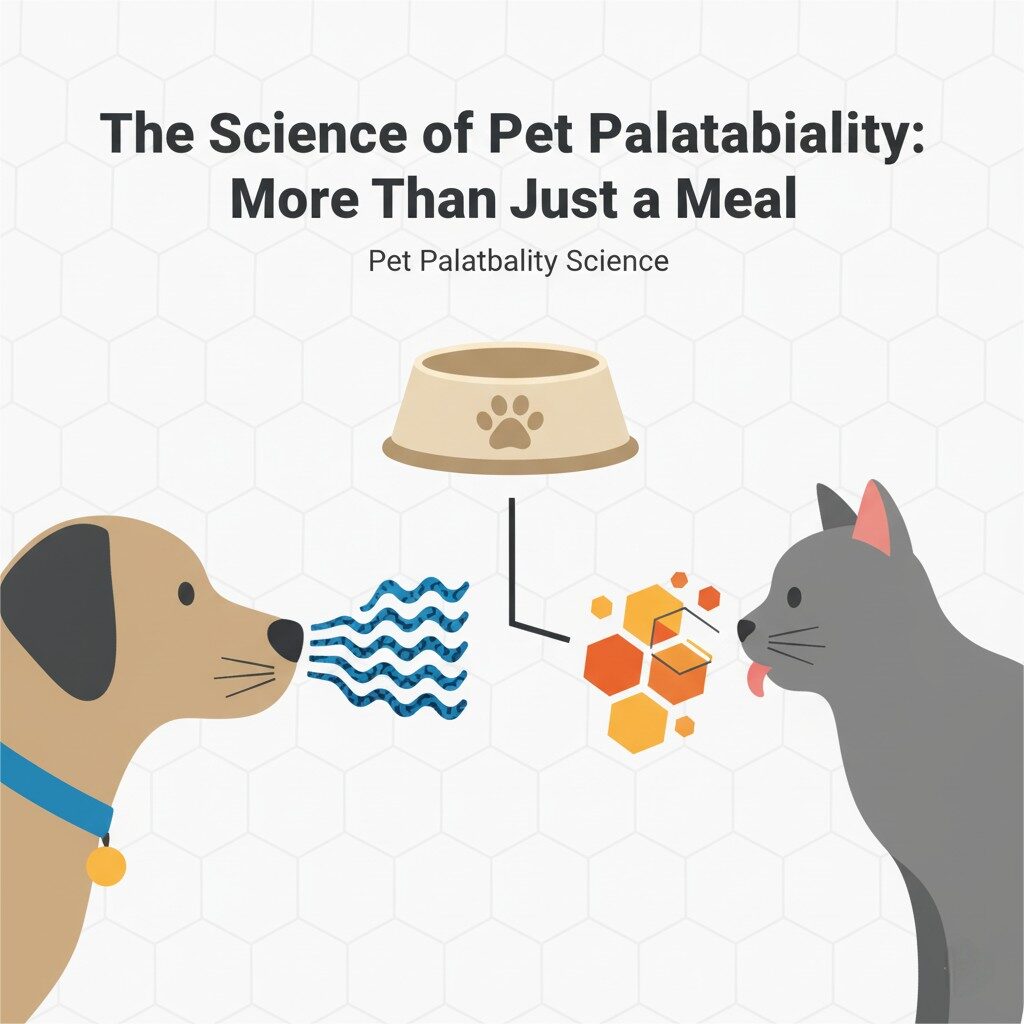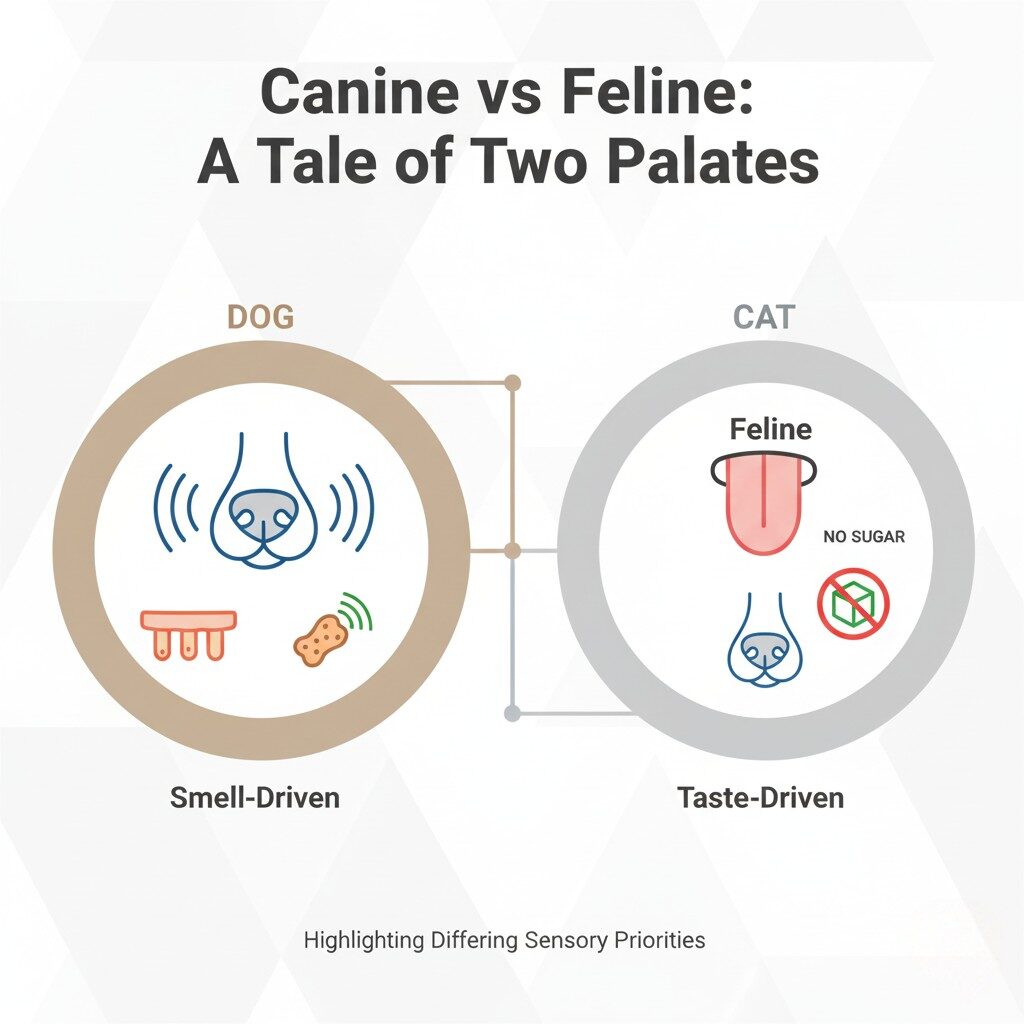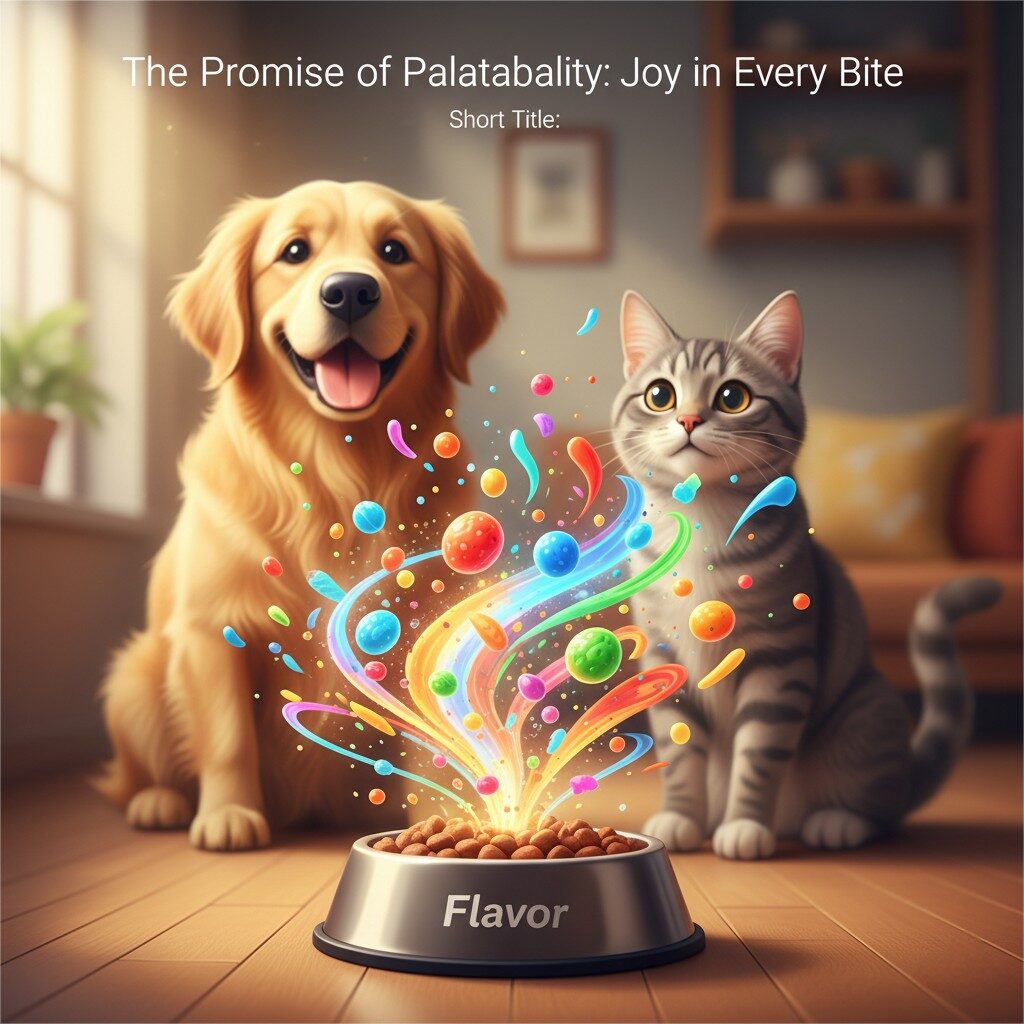The Strategic Science of Palatability for a Healthier Pet

Pet Palatability Science
For pet owners, a pet’s health and happiness are paramount. We meticulously choose foods based on nutritional content, brand reputation, and ingredient quality. But all that careful consideration becomes irrelevant if our furry friend turns up their nose at the bowl. A dog’s powerful sense of smell or a cat’s highly selective palate can render the most scientifically formulated food inedible to them. This is where the world of pet food palatability becomes a critical, strategic science.
Palatability is a technical term that refers to how appealing food is to an animal, driven by its taste, aroma, texture, and mouthfeel. It is the crucial bridge between a product’s nutritional promise and its actual consumption. Unlike human food, which is often chosen for flavor variety and sensory novelty, a pet food flavor must achieve a singular, unwavering goal: to ensure the animal eats the complete and balanced nutrition it needs. This extensive technical guide explores the sophisticated science behind pet food flavors, revealing how food technologists, flavorists, and animal nutritionists collaborate to create meal solutions that are not just healthy, but irresistibly delicious to our companions.
The first step in creating a compelling flavor for a pet is to understand how they perceive food. The sensory biology of a dog and a cat are fundamentally different from each other, and from our own.
A dog’s primary sense for evaluating food is smell, which is orders of magnitude more powerful than a human’s. A dog’s olfactory epithelium, the tissue responsible for smell, is far larger and contains hundreds of millions more olfactory receptors than ours. This means that a kibble’s initial aroma is the most significant factor in whether a dog will even consider eating it.
Cats are arguably the most challenging and demanding consumers in the pet food industry. Their sensory biology is highly specialized, reflecting their status as obligate carnivores.

Canine vs. Feline Palates
Creating a palatable pet food is a complex technical challenge that must address several critical factors unique to the manufacturing process.
Pet foods, particularly dry kibble, undergo a process called extrusion, which involves high heat, pressure, and shear. Canned foods undergo retort sterilization, which also uses high heat to ensure food safety and shelf stability. These processes can destroy the very flavor and aroma compounds that make food appealing. The volatile compounds that create the “fresh meat” smell are particularly susceptible to this degradation.
Modern pet foods often contain functional ingredients that are essential for a pet’s health but come with undesirable off-notes.
A pet food’s formulation is a delicate balancing act. It must meet the rigorous nutritional guidelines set by bodies like the Association of American Feed Control Officials (AAFCO) in the US or FEDIAF in Europe. This means every ingredient has a specific purpose. Palatability must be achieved without adding unnecessary ingredients or compromising the nutritional integrity of the final product.
Given these challenges, flavor development for pet food has become an advanced science, utilizing a range of specialized technologies and ingredients.
The most critical tool in the pet food flavor arsenal is the palatant, also known as a digest or flavor enhancer. Palatants are typically liquid or powdered savory flavor solutions that are applied topically to the surface of kibble after the extrusion process.
Umami, the fifth taste, is the cornerstone of pet food palatability. It is the taste of glutamates and nucleotides, which provide a deep, savory richness and a satisfying “fullness.” While fat provides an important carrier for flavor, it is the umami compounds that truly drive a pet’s craving for a food.
For products containing high levels of vitamins, minerals, or plant-based proteins, flavor solutions often include masking agents. These are specialized compounds that neutralize or block the perception of undesirable bitter, metallic, or astringent notes. This ensures that the health benefits of the food are not compromised by a poor taste.

The Palatability Process
For a pet food manufacturer, the creation of a palatable product is a collaborative effort. The flavor solution is not a simple commodity but a highly tailored system that must work seamlessly with the nutritional formula, processing methods, and packaging. This requires a deep partnership with a specialized flavor house. A true flavor expert brings:
The pet food market is a hotbed of innovation, driven by a new generation of pet owners who are more informed and demanding than ever.
A 2023 market analysis report highlighted that palatability remains a top consumer purchasing driver, with a significant portion of pet owners willing to pay more for a food their pet enjoys (Reference 1: Grand View Research). This underscores the strategic importance of flavor in a market where taste is the ultimate indicator of success.
In the world of pet food, a product’s true value is not just in its nutritional content but in its ability to be a source of joy for our pets. The science of pet food palatability is a fascinating and crucial discipline that bridges the gap between meticulous nutritional formulation and a pet’s inherent desires. By mastering the strategic use of palatants, the power of umami, and a deep understanding of animal sensory biology, flavor technologists are helping to ensure that every bowl is a happy, healthy, and delicious experience.
The ability to deliver an appealing product at a commercial scale is the key to winning in this market. It is the factor that transforms a product from a simple necessity into a source of happiness and well-being for our cherished companions.

Joy in Every Bite
Keywords: pet food flavors, animal nutrition flavors, palatable pet food
Author: R&D Team, CUIGUAI Flavoring
Published by: Guangdong Unique Flavor Co., Ltd.
Last Updated: Sep 16, 2025
Copyright © 2025 Guangdong Unique Flavor Co., Ltd. All Rights Reserved.